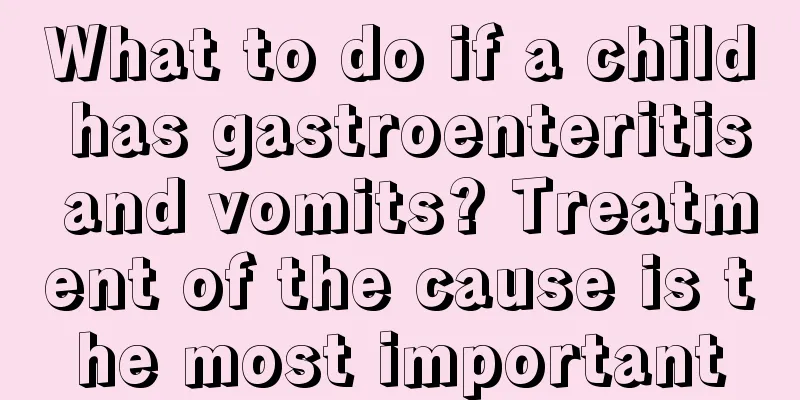There are three most likely ways to transmit hand, foot and mouth disease!

|
Hand, foot and mouth disease is caused by the spread of bacteria, so there are many ways of transmission. Experts can detect related viruses in the feces of hand, foot and mouth disease patients. This virus is easily transmitted among children, so prevention is particularly important. Transmission method 1: Generally speaking, children with hand, foot and mouth disease and latent infections are the sources of infection of this disease. Enterovirus can be detected in the eyes and feces of children a few days before the onset of the disease, and it is highly contagious within a week after the onset of the disease. In fact, the enterovirus that causes hand, foot and mouth disease can be transmitted in many ways, but close contact between people is the main way of transmission. Children may be infected with hand, foot and mouth disease if they come into contact with herpes fluid, respiratory secretions and feces of sick children. Transmission method 2: Secondly, if children come into contact with towels, cups, handkerchiefs and milk bottles that have been contaminated by sick children, or even come into contact with medical equipment, bedding and underwear of sick children, the store may cause infection. Secondly, the saliva and throat secretions of sick children can be transmitted through the air, so close contact with sick children can also cause infection. In addition, once the child drinks or eats food or water contaminated by the virus, it is very likely to cause infection. Transmission method three: Hand, foot and mouth disease is everywhere. It usually lurks in invisible places. Sometimes you don’t even know how you got it. There are many ways of transmission of hand, foot and mouth disease. The most important way is that people get it through close contact with patients, especially in crowded places. The denser the crowd, the greater the chance of getting it. In addition, if normal people come into contact with towels, handkerchiefs, cups, toys, tableware, milk utensils and other daily necessities contaminated by the virus of patients with hand, foot and mouth disease, they will also get hand, foot and mouth disease. The chance of this happening is smaller, but it is also contagious. |
<<: What should I do if my child coughs and vomits? These measures are very effective!
>>: What is the normal body temperature for a newborn?
Recommend
What should we do if children have developmental delays?
As parents, we must pay special attention to the ...
What is the cause of small pimples on the child's hands?
There are many diseases that children are prone t...
How to reduce swelling of children's nasal concha
Swollen nasal conchae in children is a type of in...
Early symptoms of tics in children
Children’s health is often what parents care abou...
What should I do if my child has a fever and cold limbs?
Children have relatively poor immunity, so they o...
What to do if your child has indigestion and constipation
When the baby is young, due to the lack of probio...
How to treat rubella in children more effectively
When children are affected by rubella, of course ...
How to quickly reduce baby's fever without taking medicine or injections
There are actually many treatments for baby's...
What is the height standard for children?
Parents should be very concerned about their chil...
What should babies eat to reduce internal heat?
Babies are in a period of rapid growth and develo...
What to do if the newborn baby has not defecated for four days
When taking care of your baby, you always need to...
Causes and treatments for runny nose in newborns
In fact, we often need to be extra careful in car...
What to do if your baby has precocious puberty
Since the reform and opening up, our lives have b...
Why does a 2-month-old baby not sleep and cry during the day?
We all know that when a child is less than 100 da...
What should you pay attention to when a nine-year-old child is changing his teeth?
Children's tooth replacement is something tha...









